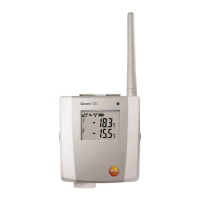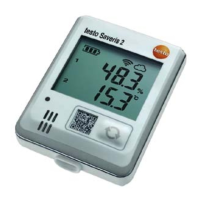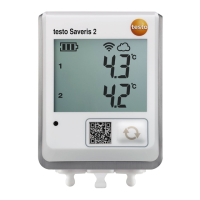5 First steps
86
transmission routes of the components involved are not
strictly defined in the case of the extender. The radio
probes registered on the base each search for the best
radio link and subsequently communicate via the
relevant extender. This is a major advantage if the radio
quality may be subject to geographical or temporal
changes, e.g. in a warehouse.
In principle it is preferable to use the extender rather
than the converter.
Please note that when using a stationary extender it is
not possible to trace the transmission/communication
path of the measurement data in the System software
menu because there is no 1 to 1 connection between
extender and radio probes or routers.
The measurement data of up to 100 radio probes can
be transmitted with a Saveris extender to the Saveris
base. As a minimum retention time for the mobile unit
on the ramp, at least two cycles are recommended for
secure data transfer (30 min).
As the mobile probes only have a limited internal
memory, it is necessary to ensure that they come into
regular radio contact with a Saveris extender depending
on the measuring cycle to enable the measurement
data to be transferred.
You can connect several Saveris extenders to the
Saveris base via a switch. Bearing this in mind, note
that up to 20 Saveris extenders can be registered on
the Saveris base with a maximum number of 150
probes or 450 measurement channels. If the connection
is to be implemented via VPN, please contact our
service hotline (servicehotline@testo.de) for detailed
information.
The preparation for the startup of an extender is
performed in the same way as for a Saveris Ethernet
probe; see Connecting the network cable. page 74 up
to and including see Connecting Ethernet probe with the
Saveris base, page 80.

